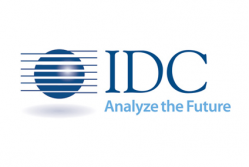 IDC’s Worldwide Semiannual Augmented and Virtual Reality Spending Guide update has forecast Western European revenues for the AR and VR market to be $2.5 billion in 2017. This represents a 131% rise of over the $1.1 billion spent in 2016. Also, AR/VR spending is expected to further increase achieving a compound annual growth rate from 2015 to 2020 of 210%, and totalling $25.7 billion in 2020.
IDC’s Worldwide Semiannual Augmented and Virtual Reality Spending Guide update has forecast Western European revenues for the AR and VR market to be $2.5 billion in 2017. This represents a 131% rise of over the $1.1 billion spent in 2016. Also, AR/VR spending is expected to further increase achieving a compound annual growth rate from 2015 to 2020 of 210%, and totalling $25.7 billion in 2020.
Prior to this update, IDC published a global forecast “IDC Forecasts AR and VR to Reach $13.9 Billion in 2017”.
In the coming years, IDC believes that the consumer market will be the largest AR/VR segment, accounting for greater than 50% of spending in Western Europe, by 2018. However, the consumer share of AR is expected to remain below 20%.
AR spending in Western Europe, in terms of both market share and growth, will be driven by manufacturing and retail. Manufacturing, retail, and utilities, will be the three fastest growing industries for AR/VR with all these sectors expected to have a CAGR of around 220% for the period 2015 to 2020.
AR/VR European spending this year will be led by industrial maintenance (manufacturing), logistics and package delivery management (transportation), and product development (manufacturing).
In the next four year, retail showcasing (retail) and anatomy diagnostics (healthcare) will be the fastest growing industrial use cases.
Games will lead industry growth on the consumer side of the market, with both AR and VR games expected to achieve a CAGR above 220%.
Software and services spending is expected to rise to more than 50% of overall AR/VR revenues in 2020. Currently, hardware (including both viewers and commercial hosts) represents more than 80% of the AR/VR spending in Europe and this percentage will decrease as software and services spending rises.

